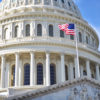New Report Confirms Labor Needs in STEM Fields
Date: November 30, 2012
“Help Wanted: The Role of Foreign Workers in the Innovation Economy,” a report by the Information Technology Industry Council, the Partnership for a New American Economy, and the U.S. Chamber of Commerce, gives evidence that foreign-born workers in the fields of Science, Technology Engineering, and Math (STEM) are complementing – not displacing – their American counterparts, and that the American economy is facing a shortage of STEM talent. Congress is currently considering multiple bills to provide green-cards for foreign-students who earn advanced degrees from US universities in STEM fields. Past research has shown that each of these students who stays in the US creates on average 2.62 jobs for American workers. This report analyzes STEM employment using data from the US Census and the US Department of Education Integrated Post-Secondary Education Data System (IPEDS), and finds that:
- There is full employment for US STEM workers with advanced degrees: While the current national unemployment rate hovers around 8 percent, the unemployment rate for US citizens with PhDs in STEM is just 3.15 percent and 3.4 percent for those with master’s degrees in STEM. Given that the US government has defined “full-employment” to be 4 percent, this suggests a skills shortage of STEM professionals with advanced degrees.
- In many STEM occupations, unemployment is virtually non-existent: While the current national unemployment rate hovers around 8 percent, the unemployment rate for US citizens with PhDs in STEM is just 3.15 percent and 3.4 percent for those with master’s degrees in STEM. Given that the US government has defined “full-employment” to be 4 percent, this suggests a skills shortage of STEM professionals with advanced degrees.
- STEM fields employ a far higher proportion of foreign workers than non-STEM fields: In STEM fields, 26.1 percent of workers with PhDs are foreign born, as are 17.7 percent of workers with master’s degrees. In comparison, in non-STEM fields, just 6.4 percent of doctoral workers and 5.2 percent of master’s workers are foreign born.
- STEM fields with high percentages of foreign STEM workers have low unemployment rates for US workers: Although nearly 25 percent of Medical Scientists are foreign born, US Medical Scientists enjoy an unemployment rate of just 3.4 percent, fully five percentage points lower than the non-STEM unemployment rate (8.4 percent). Similar stories exist for STEM occupations such as physical scientists and computer software designers, where immigrants make up more than 20 percent of the field and unemployment is just 4 percent. Unemployment across all STEM occupations is just 4.3 percent, and the unemployment rate is actually lower than that average in 10 of the 11 STEM occupations with the largest proportion of foreign workers.
- Foreign-born STEM workers are paid on par with US STEM workers: There is no verifiable evidence that foreign-born STEM workers adversely affect the wages of American workers by providing a less expensive source of labor. The average STEM worker actually makes slightly more than his or her US counterpart, earning on average $61 more per week.
Download and read “Help Wanted: The Role of Foreign Workers in the Innovation Economy” (PDF)


